Egypt had a vast empire that flourished along the Nile. The ancient Egyptians referred to their civilization as the “Two Lands,” encompassing Upper Egypt in the south and Lower Egypt in the north, with the Nile River serving as the heart of their empire. Along its banks, cities flourished, temples rose, and agriculture thrived, allowing the pharaohs to establish one of the most enduring empires in history. The Nile not only provided water and fertile soil but also served as a highway for commerce, culture, and conquest, connecting distant regions and fueling Egypt’s wealth and power. Key cities such as Memphis, Luxor and Aswan became centers of administration, religion, and trade.
Aswan
Aswan is the southernmost city in Egypt and is located about 600 miles from Cairo. It served as the gateway to ancient Nubia, is home to a few spectacular monuments and its granite quarries supplied many ancient Egyptian monuments.
I had never heard of the word Nubia before traveling to Aswan. I was still confused about what it was referring to because the descendants from that ancient civilization still exist today, but it is not a country. Nubia was the ancient region encompassing parts of modern-day southern Egypt and northern Sudan. It played a critical role in trade, serving as a bridge between sub-Saharan Africa and the Mediterranean world.
Today, Nubians live in Nubian villages and visiting them exists as a tourist attraction. They are scattered throughout Aswan, on either side of the Nile. While I didn’t visit any, expecting them to be tourist traps, something as inauthentic as road side attractions tour buses bring you to–I stayed in the area of Aswan considered to be a Nubian area. There weren’t many hostels in Aswan and it was the cheapest one that had decent reviews.
The hostel was located on the east bank of the Nile and was a refreshing reprieve from the deserts of Cairo. Granted, we weren’t out of desert; Egypt is, for the most part, is all desert and the relentless 112-degree afternoons served as a poignant reminder that there is no escaping the oppressing summer heat. One afternoon, I swam in the Nile with the only two other guys in the hostel, but other than that, after exploring, our time was spent in the hostel dorm trying to stay cool until the evening. Power outages frequently disrupted the air condition’s ability to function and even without the outages, it may have just been too hot for the air condition to function properly.
I had originally planned for three nights in Aswan, but after the first day and a hostel that was one of the worst I’ve stayed in (minus the beautiful views of the Nile from the rooftop), and with not much else to do or to see after the second, I decided to only spend only two. This allowed me to stay an extra night in Luxor.
Fortunately, at the hostel in Aswan, I made a friend who arrived shortly after me on the morning of my first day. We’d spend the next two days exploring Aswan together. Though we traveled to Luxor separately, we’d spend our days exploring the city and its monuments, until he would leave a day before me.
The Aswan Dam and Monuments Moved
The construction of the Aswan Dam, completed in 1970, was a huge achievement that provided hydroelectric power and supported agriculture in Egypt. However, its creation led to the flooding of a vast area of the Nile Valley, submerging many ancient monuments and archaeological sites in Nubia beneath the waters of the newly created Lake Nasser.
To preserve these invaluable sites, a rescue effort led by UNESCO relocated several monuments to higher ground. The most famous of these were the temples of Abu Simbel, built by Ramses II, and the Philae Temple complex, which were meticulously dismantled and reconstructed at new locations.
This raises the question of authenticity. While the stones of these monuments remain unchanged, the location in which they were originally built is not. Does moving the monuments compromise the intent behind their creation? How do we strike a balance between preserving heritage and honoring its authenticity? Is there a difference between Abu Simbel and Philae Temple and something like the Egyptian Temple of Dendur, that has a whole room in the Metropolitan Museum of Art in New York?
I believe there is. For Dendur temple, its placement in the museum is transparent–it’s clear that this temple is no longer in its intended location. It has become an object of the museum, put into it, to preserve and inspire. Abu Simbel and Philae Temple exist in a location that could easily deceive visitors. If you weren’t aware of the history behind the Aswan Dam and the relocation efforts, you might assume they are in their original locations. And therein lies the difference: one acknowledges its displacement, while the other blurs the line, creating the illusion of permeance that isn’t entirely true.
Philae Temple
Philae temple was constructed in the 4th century BC. It is only about a 20-minute taxi ride from Aswan, but then a short boat ride is required to reach its current location on Agilkia Island. It was originally located on Philae Island, before the Aswan Dam was built and flooded the area, so its current location does the monument justice. Surrounded by water, situated within the Nile, it is an impressive sight. My New Zealand friend and I had the temple to ourselves. There was hardly anyone else in sight. At 112 degrees, it was too hot, sitting in the uncovered sun for more than a few minutes. The complex is small and didn’t require more than an hour to see it.
Abu Simbel
Abu Simbel is an impressive archeological site about a 3.5-hour drive from Aswan and about 20-30 miles from the Sudanese border. We left at 4:30am from the hostel to join a small group from other hotels. Together we made the 3.5 hour journey south and back again later that day.
The larger temple features two massive rock-cut temples built by Pharaoh Ramses II during the 13th century BC. The larger temple is dedicated to himself, while the smaller temple honors his wife, Queen Nefertari.
Like Philae temple, Abu Simbel was relocated and meticulously reconstructed after the completion of the Aswan Dam. I wonder what it would have been like if they had left these monuments beneath the flooded waters of the new lake. What if they were only accessible by scuba divers, viewed only through the murky lenses of those certified to explore them? I supposed their submersion would have been a consequence of human intervention, so perhaps it’s only fitting that human efforts saved them.
The Unfinished Obelisk
The Unfinished Obelisk is located right within the city of Aswan, about a 30-minute walk from the hostel. Most of the granite used by the ancient Egyptians was mined from the red granite quarries of Aswan, making the site a significant piece of their architectural history.
The Unfinished Obelisk, the largest known ancient obelisk, lays in its resting place where it has been for thousands of years, never to be erected and reach up to the heavens like so many of its counterparts. It would have stood at 137 feet tall and weighed around 1,000 tons. For comparison, the obelisk in Central Park is 70 feet tall and weighs around 200 tons. The project was abandoned when a series of cracks appeared in the granite. It is massive and the sheer scale of the obelisk does not capture well in any of the photos I took.
The Road to Luxor
The journey between Aswan and Luxor takes about four hours, without stops, but with them takes between nine and ten hours and it’s well worth making stops at three temples along the way: Kom Ombo, the Temple of Horus at Edfu, and the Temple of Khnum. Kom Ombo stands out for its unique display of mummified crocodiles. I believe the only collection like it in Egypt. The Temple of Horus at Edfu is massive and awe-inspiring, while the Temple of Khnum, the smallest, boasts some of the best-preserved carvings with vibrant traces of their original colors. Each site offers a distinct glimpse into Egypt’s rich history and architecture.
Kom Ombo
Kom Ombo is an about an hour and twenty minutes from Aswan. It was built during the Ptolemaic period, the period that lasted from 305 to 30 BC, which started after Ptolemy, a general in Alexander the Great’s army, took control after his death.
Temple of Edfu
The Temple of Eddu is about an hour and a half by car from Kom Ombo. It is massive. It is also considered one of the best preserved ancient Egyptian temples. It too was built during be Ptolemaic period.
Temple of Khnum
It was difficult to get my driver to take me to the Temple of Khnum because it was the least visited of the three. People didn’t go there. He wondered why I wanted to go, but he knew how to get there and I was adamant about wanting to see it. I was tempted to skip it. We had been driving all morning. It was hot, and I had already explored two temples.
The Temple of Khnum was the smallest of the three, just a single monumental structure. Within, it features a stunning hypostyle hall with 24 intricately carved columns. The temple is magnificent, the walls and ceilings retain vibrant traces of original colors, offering an amazing insight into what the temples looked like when they were originally built.
Luxor
Growing up, the only “Luxor” I knew was the Luxor Hotel & Casino in Las Vegas (it probably came up in school, but I don’t really remember). Having never been to Vegas and thus never going to the Luxor Casino, I figured that while I was in Egypt, I had to visit the real deal. The original Luxor, located on the bank of the Nile in southern Egypt.
Luxor is referred to as the “world’s greatest open-air museum.” There is an incredible concentration of ancient monuments, like the sprawling Karnak Temple, the Luxor Temple, and the Valley of the Kings, where you can find the mortuary temple of Hatshepsut and the tombs of many pharaohs, like Tut and Ramses II.
Karnak Temple
Karnak Temple, located in Luxor, is one of the largest and most impressive temple complexes in the world. It features towering columns, intricately carved walls, and massive statues and the Great Hypostyle Hall, with a forest of 134 colossal columns. I met my New Zealand friend out front in the morning and we spent the day exploring.
When we arrived, the parking lot was filled with tour buses and when we left, it was empty. We didn’t get there early enough to beat the crowds, but they thinned out as we navigated through the complex. It was hot out and we initially considered walking to Luxor Temple, but we realized we would never make it. Instead, we took a taxi.
Getting a ride wasn’t without its drama. A brief altercation broke out between the Egyptian Uber driver we booked and a street taxi driver who tried to convince us to go with him instead. We let the Egyptian Uber driver take us because we had confirmed the trip with him. He would also take me the next day to Dendera temple.
Luxor Temple
Luxor Temple, situated closer to the Nile than Karnak, is equally stunning, but significantly smaller. It’s not too far from Karnak temple and on a less hot day you can walk it. It is known for its avenue of statues and the striking obelisk at its entrance. Missing is the other stolen by the French, which now sits in the traffic circle of Place de la Concorde.
Connecting the two temples is the Avenue of Sphinxes, a 1.7 long miles road lined with hundreds of sphinx statues, most of them headless. The road dates back 3,400 years ago and was expanded across different Egyptian dynasties over hundreds of years.
The Valley of the Kings
The east bank of the Nile was for the living. It’s the reason why ancient Egyptian cities were built on the east side, while the left bank was for the dead. The Pyramids are on the West Bank, along with other tombs and mortuary temples, like those found in the Valley of the Kings.
The Mortuary Temple of Queen Hatshepsut
The Mortuary Temple of Queen Hatshepsut is an impressive terraced structure with a monumental ramp, built around 1450 BC. It’s a marvel of ancient Egyptian design and construction techniques, that is, until you realize what we see today is almost a complete reconstruction of what existed. A testament to modern day reconstruction. Unfortunately, over 80% of the temple has been rebuilt and most of the columns are not original.
The Tombs
There are over 60 tombs in the Valley of the Kings and nearly all of them have been looted. While countless precious artifacts have been taken from Egypt over the centuries and continue to be taken today, these tombs had already been looted in ancient times. For example, the tomb of Ramses II, was looted only 150 years after his death. The sole exception was King Tutt’s, which remained untouched until its discovery. It’s the main reason why he is so famous. His tomb was discovered completely intact, hidden beneath the debris of another looted tomb, which had concealed it for thousands of years.
Despite the looting, they are amazing to see. There is about 8-12 accessible to the public. Each tomb is uniquely decorated with intricate hieroglyphics and vibrant paintings depicting scenes from ancient Egyptian mythology, such as the Book of the Dead and the journey through the underworld. It’s strange to be walking through a place where some of the greatest pharaohs of Ancient Egypt were buried, rooms the ancient Egyptians never expected to see daylight again, designed as eternal resting places for those embarking on their journey to the afterlife.
It’s hard not to feel conflicted when reflecting on how we’ve treated these ancient remains. The fascination with this advanced and ancient culture is undeniable, but imagine trying to explain to someone 3,000 years ago that their body would one day be on display for innumerable tourists. It feels like an invasion of privacy. Perhaps the dead should be left undisturbed, regardless of our fascination with them.
At least we’ve moved past the morbid practices of the English in the Victorian era, who in the 18th and 19th century would host mummy unwrapping parties. The wealthy bought mummies from Egypt and hosted social events where the wrappings were ceremoniously removed to reveal the remains inside. A complete disregard for the cultural and historical significance of these ancient lives.
Dendera Temple
Dendera Temple is located slightly more than an hour’s drive from Luxor. I went with the taxi driver from the day before, the one who picked us up from Karnak Temple and took us to Luxor Temple. My Cairo guide recommended I visit this temple, insisting that I had to visit it. Not wanting to feel like I missed out on anything, I decided to visit it on my last day in Luxor.
At that point, I was templed out, probably like you are in reading this, but I had nothing else to do on my last day. The most impressive thing about Dendera is that it is one of the few ancient Egyptian temples where you can access the roof. It was amazing to be standing on the roof of a structure thousands of years old, reminiscing on its original function and what it must have been like to live during that time.
The roof offers stunning views of the temple complex and surrounding landscape. There are reliefs and small chapels, and the remnants of ancient stairs. It was an amazing experience that can’t be experienced at any of the other temples.
Visiting Egypt was an unforgettable journey. Standing in front of the ancient temples, seeing the hieroglyphics up close, and exploring the incredible monuments brought the history to life. Ancient Egypt produced some of the most awe-inspiring and lasting architecture to have ever been built.
Experiencing Egypt Part I: A Journey Through The Pyramids
Experiencing Egypt Part II: Aswan & Luxor
Experiencing Egypt Part II: An Exhausting Experience






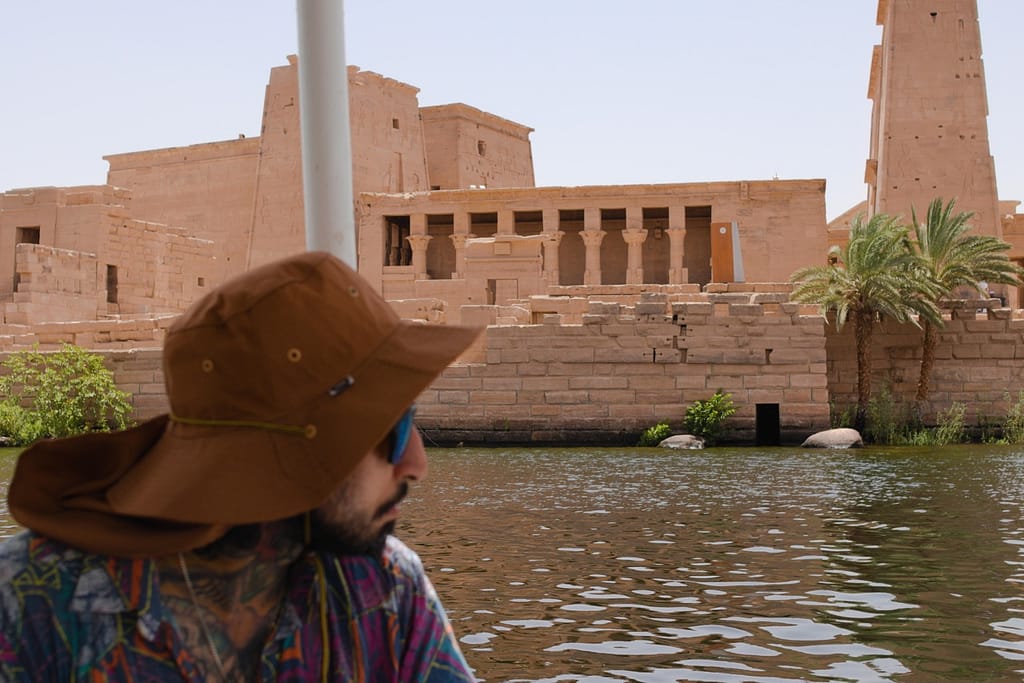



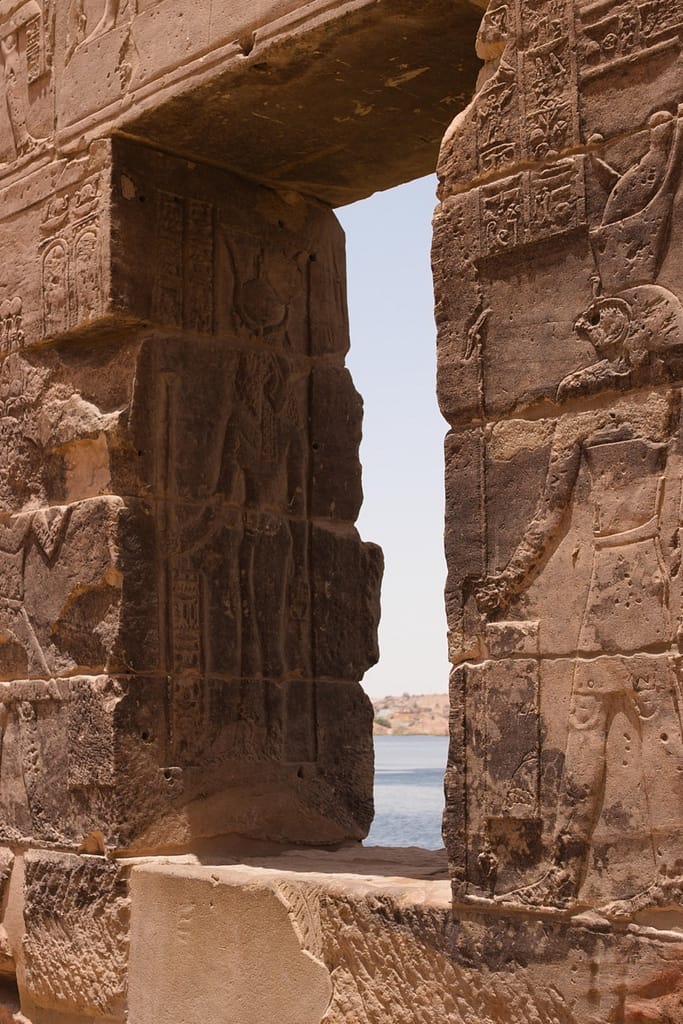






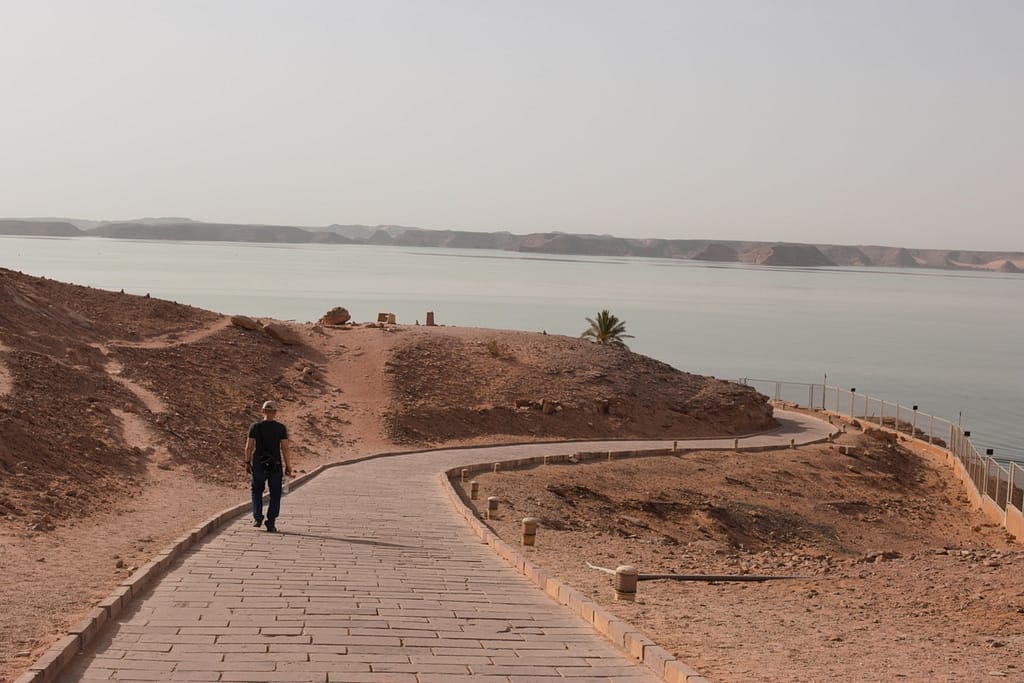





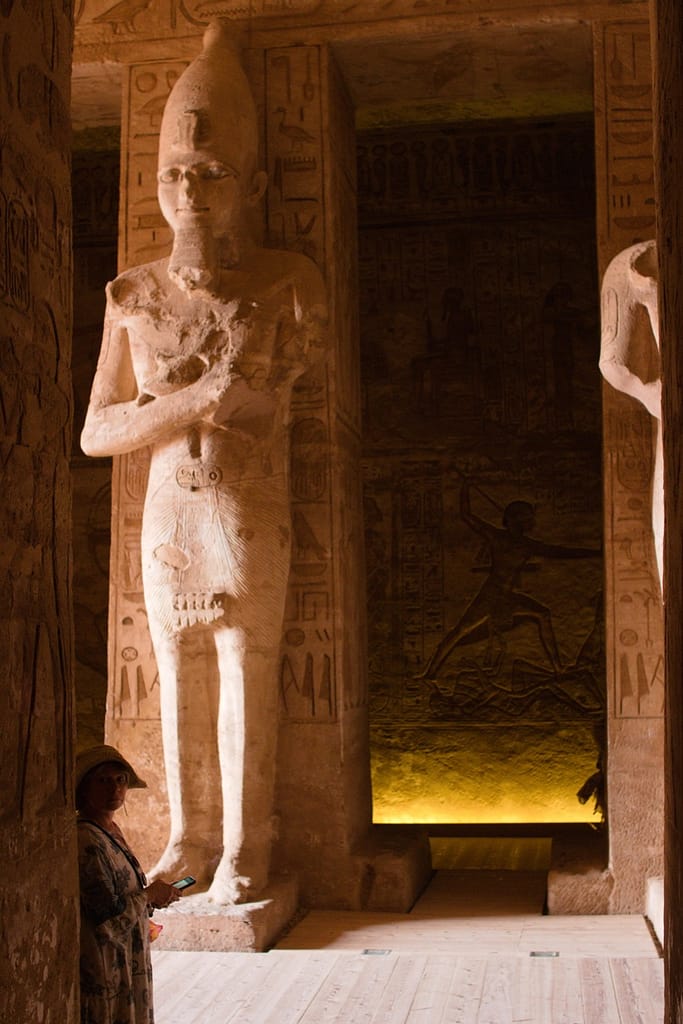



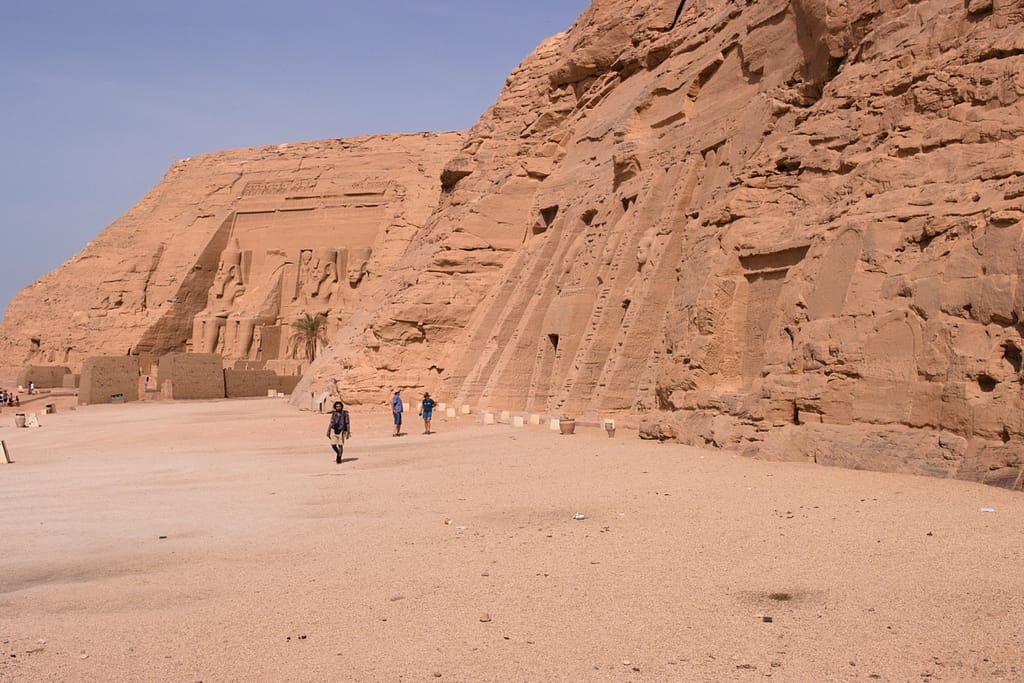





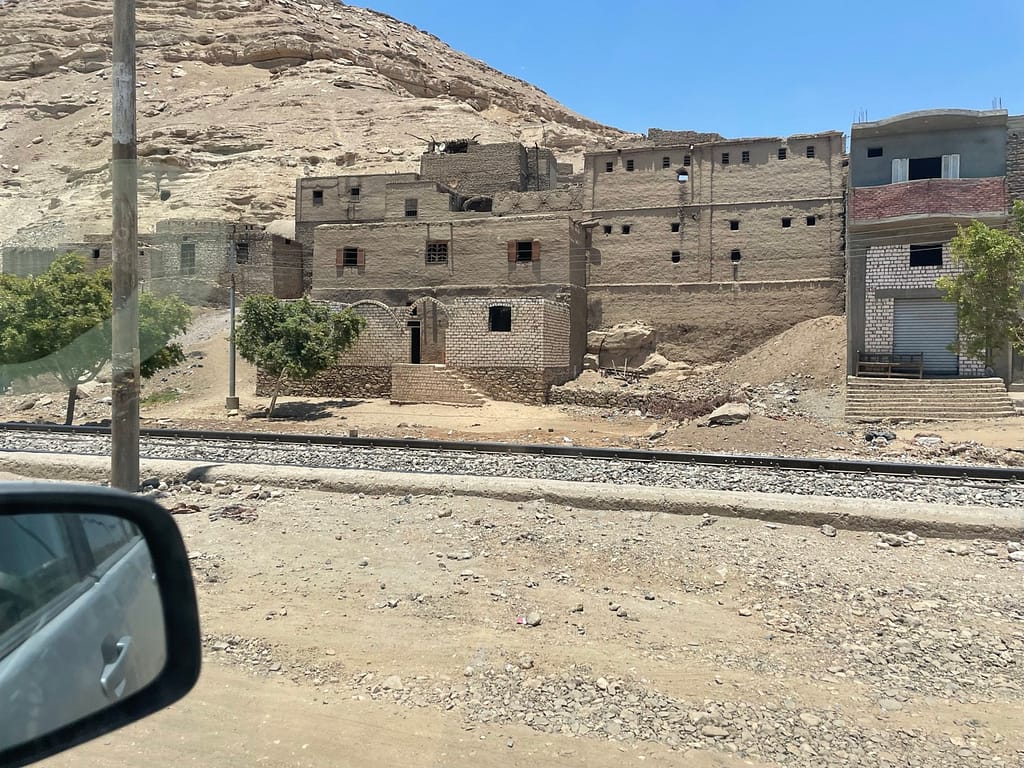













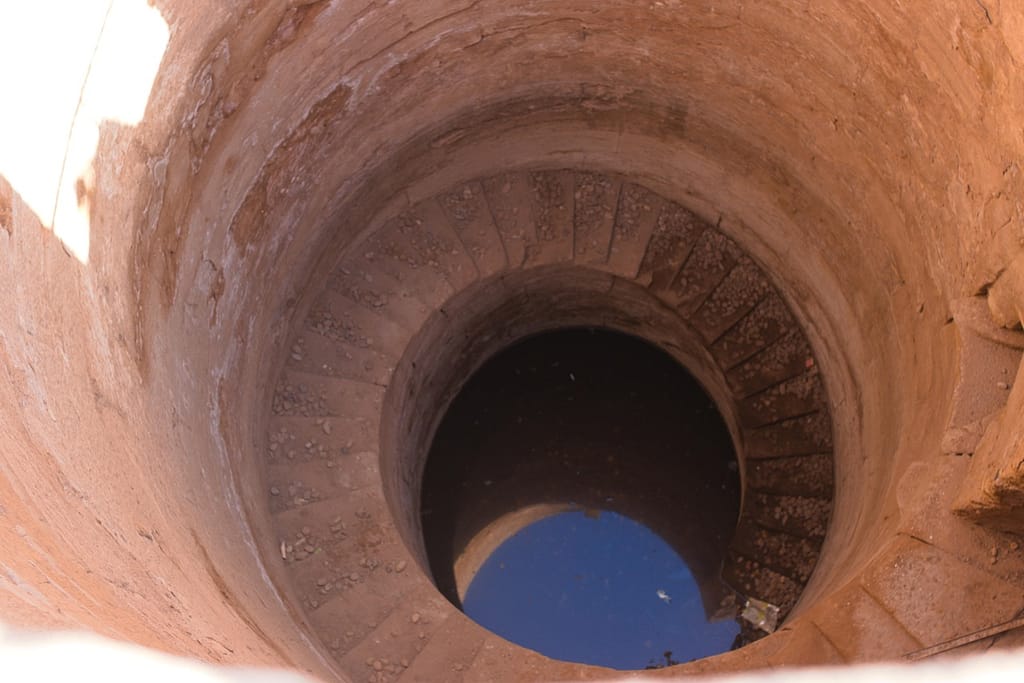





















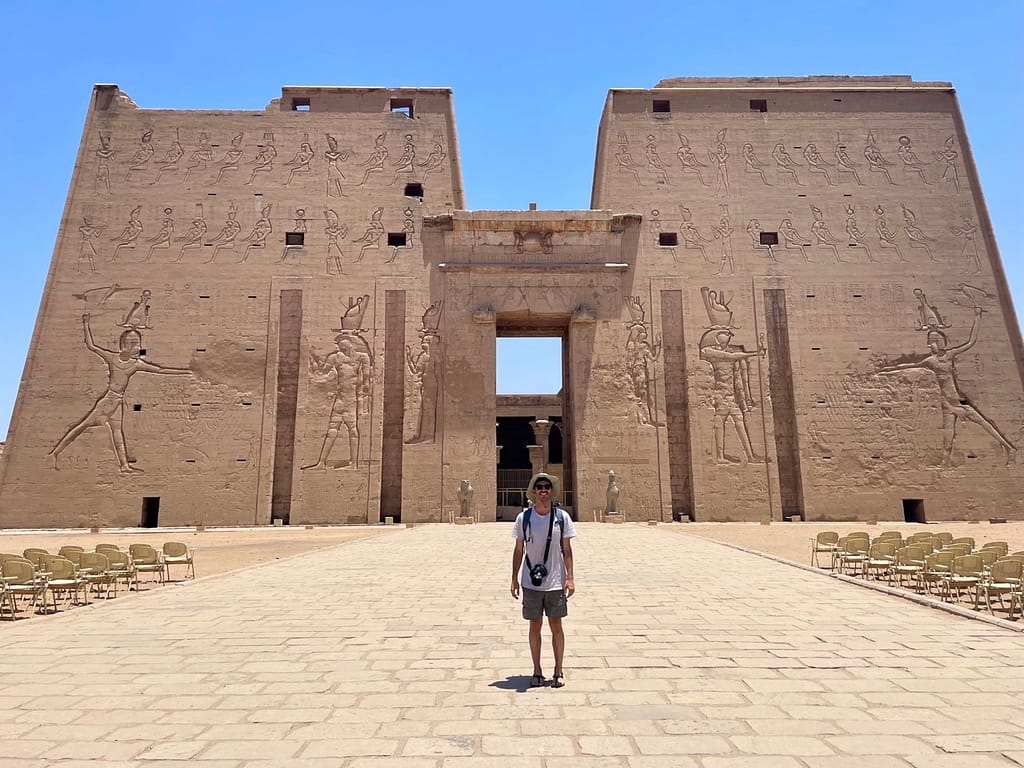







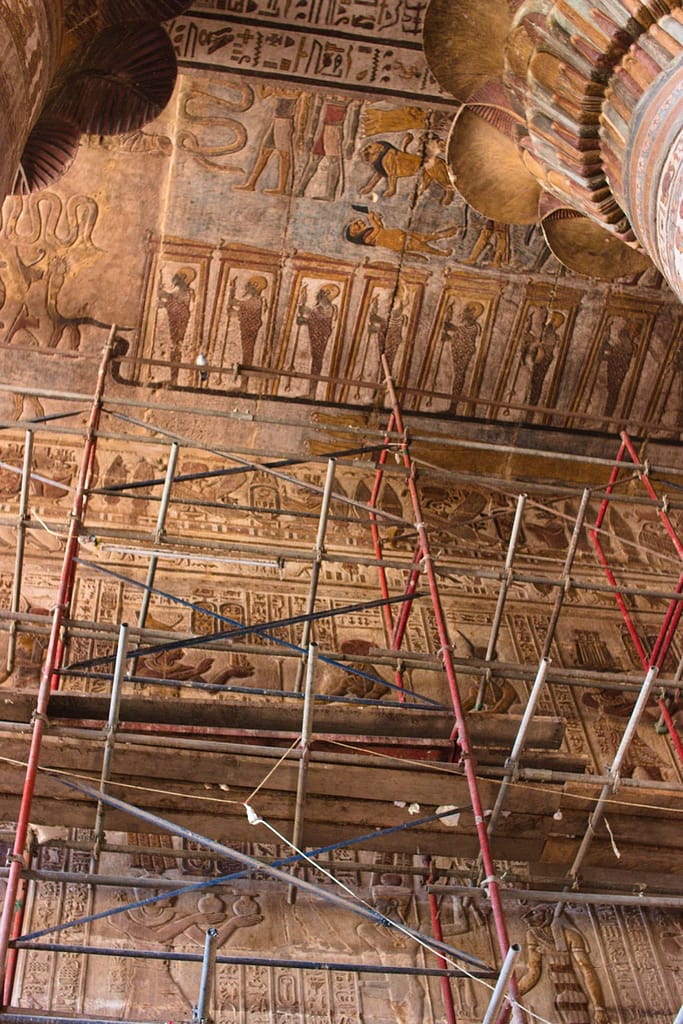



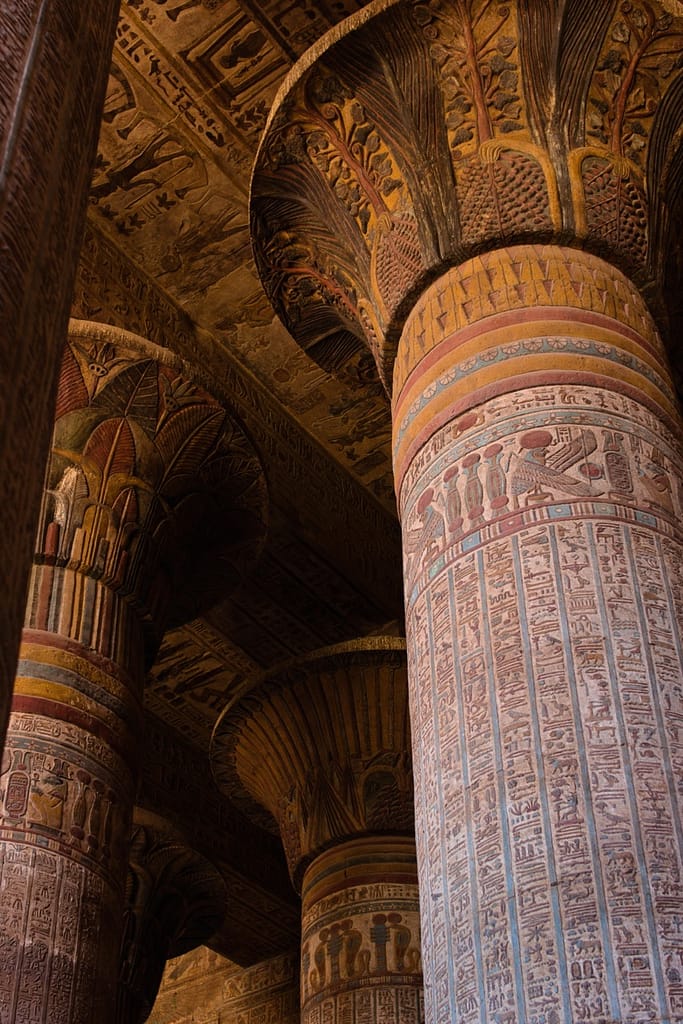

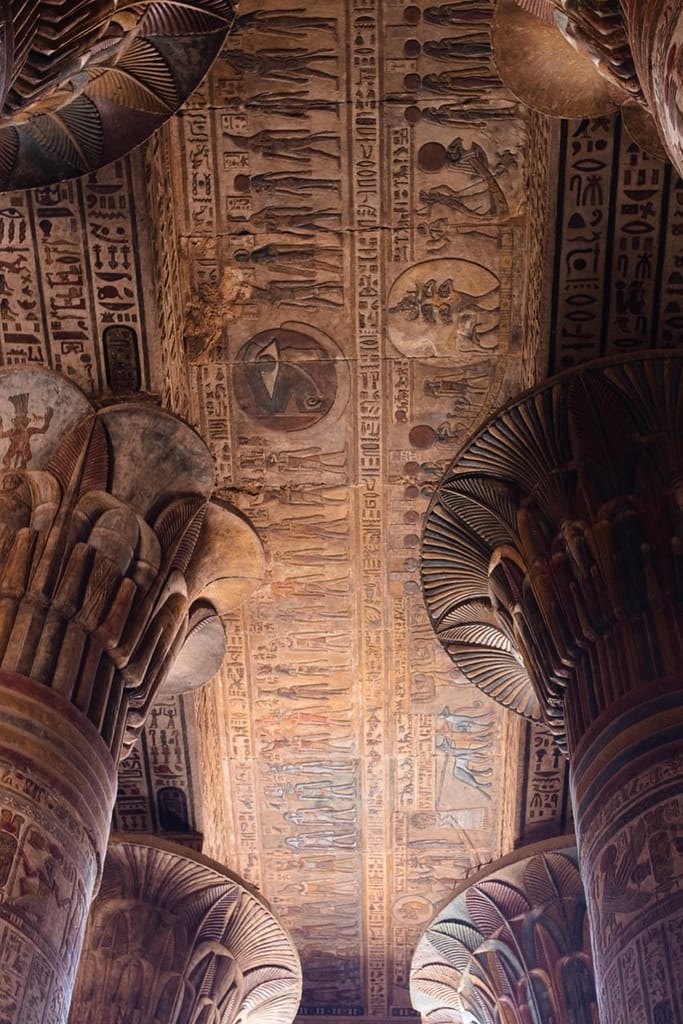

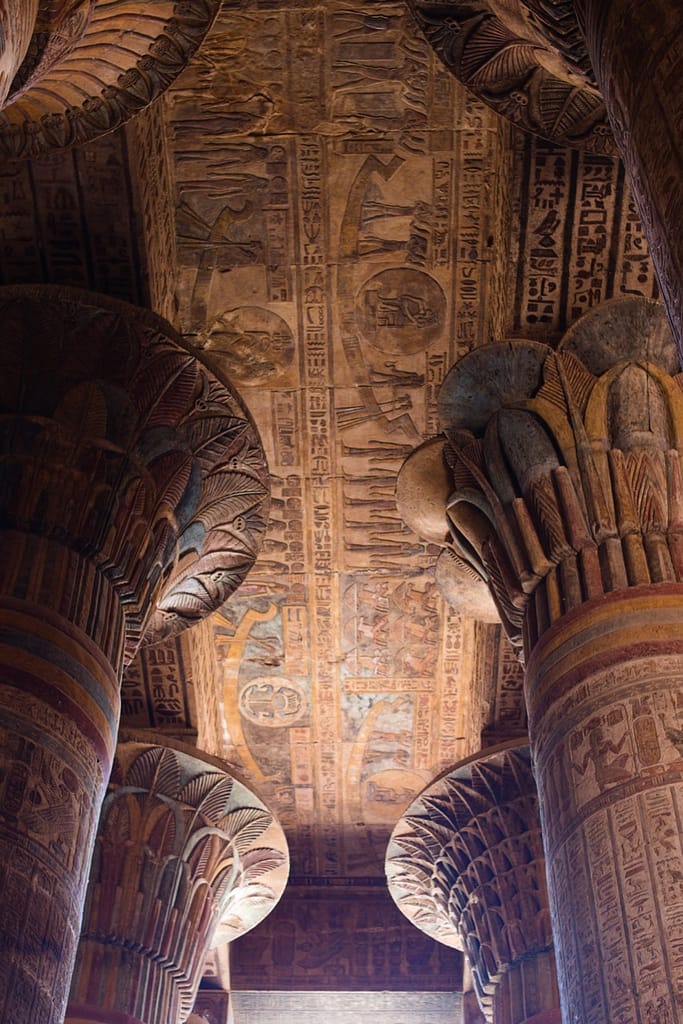







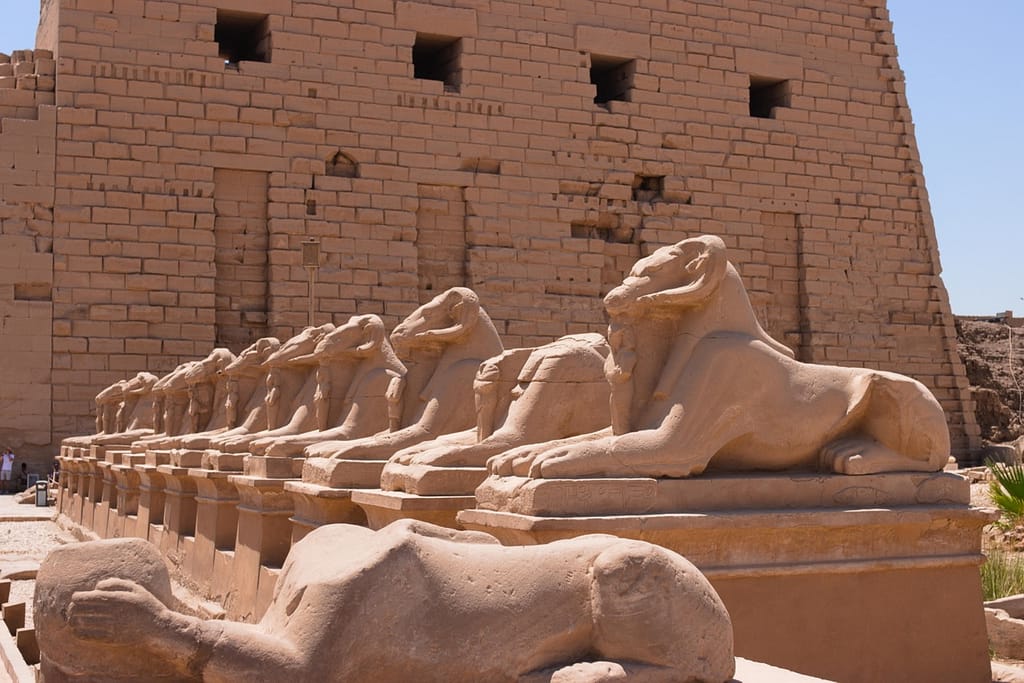





















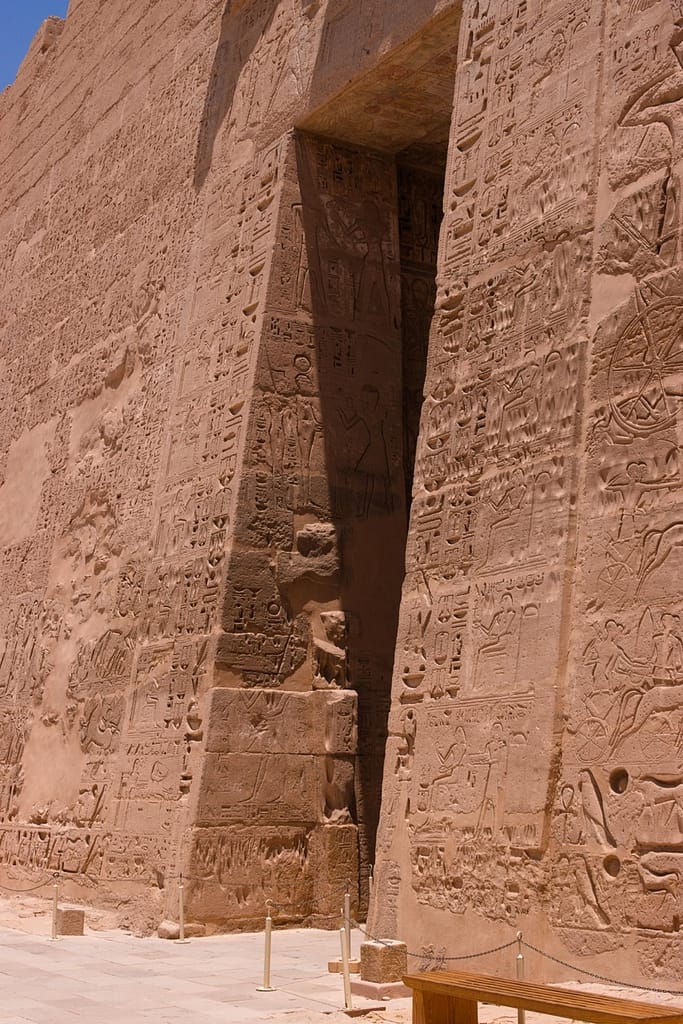











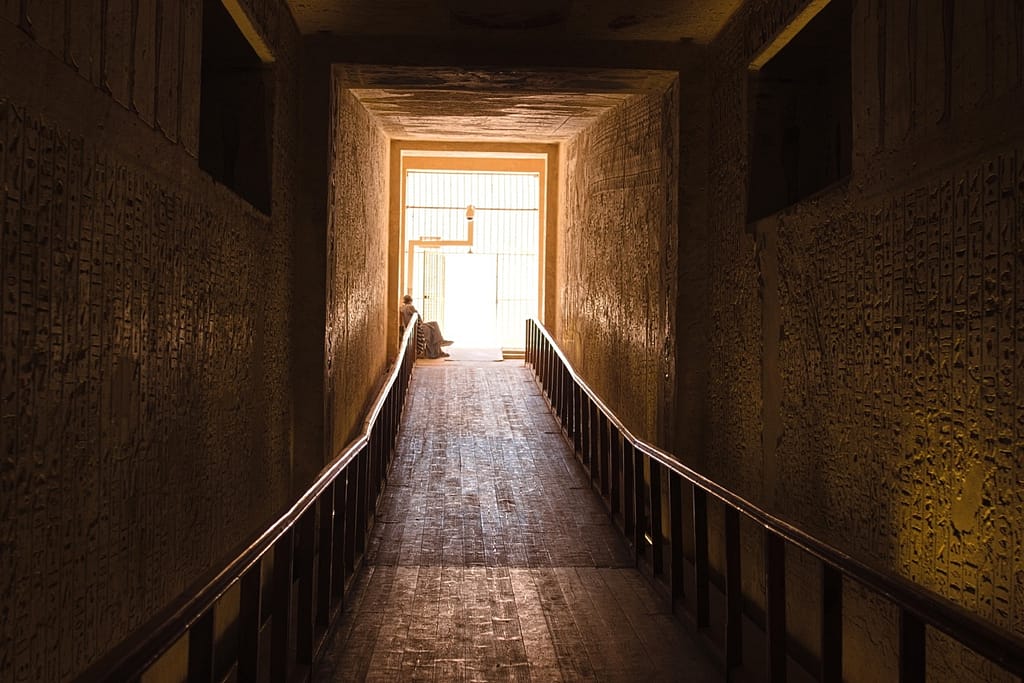




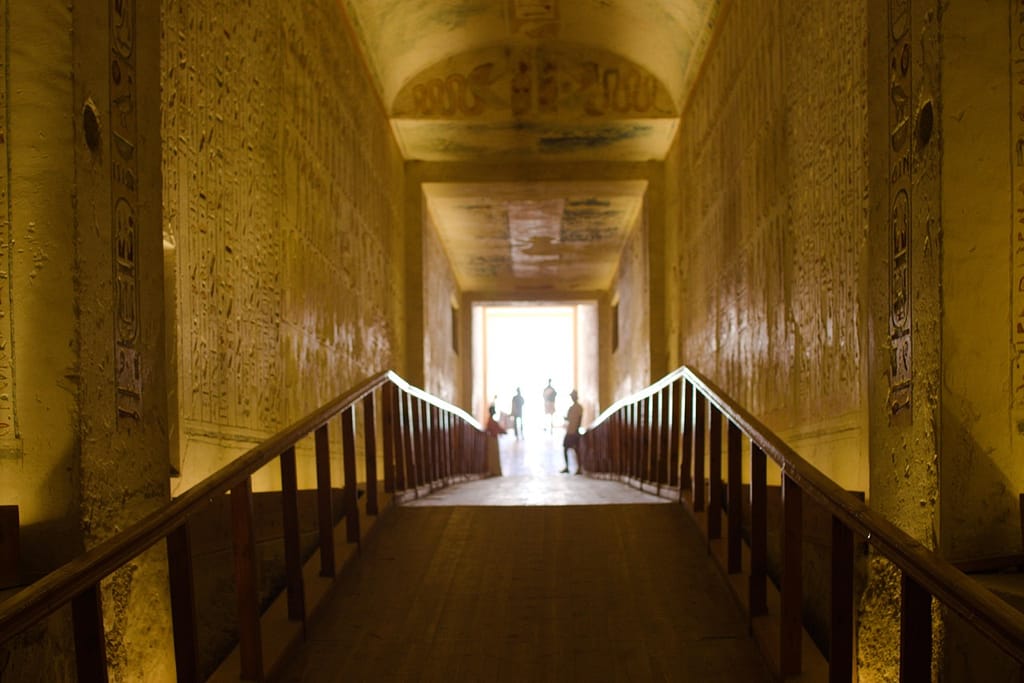


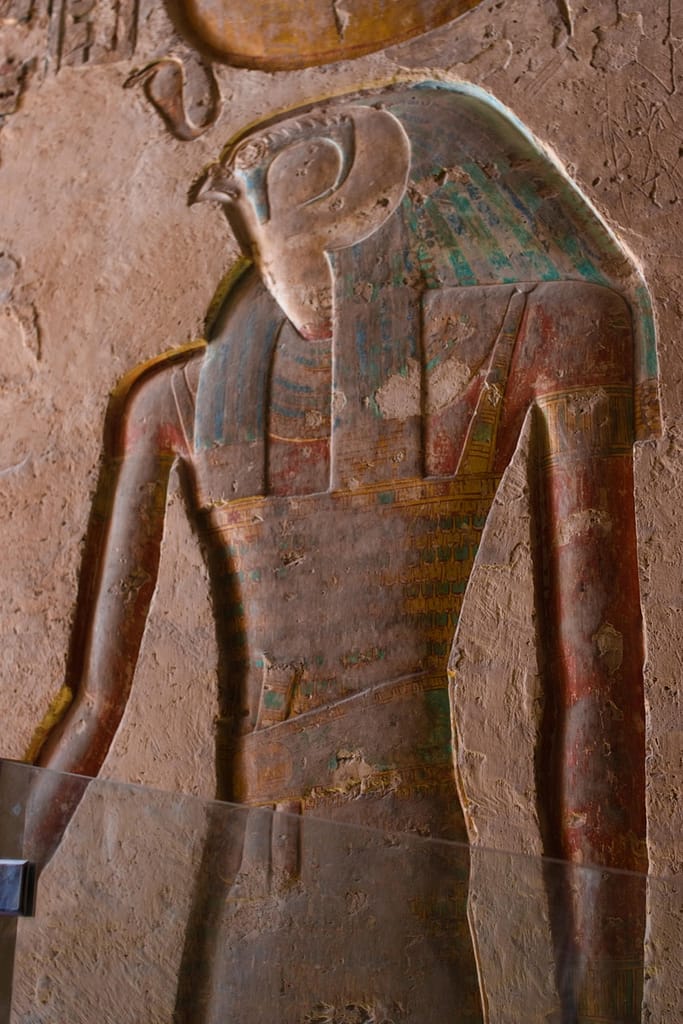








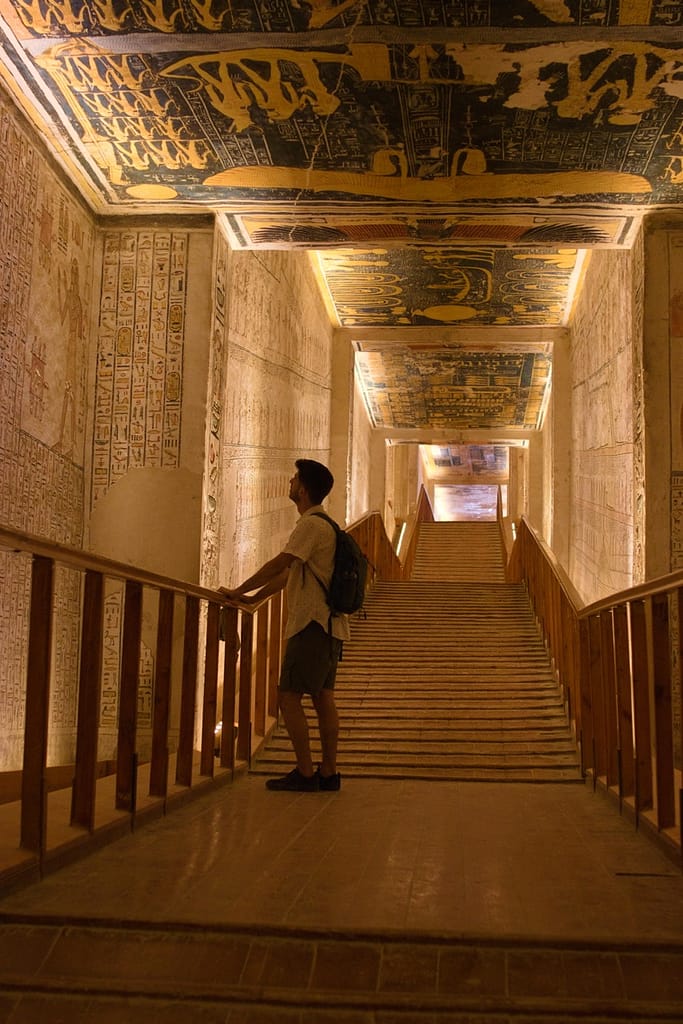






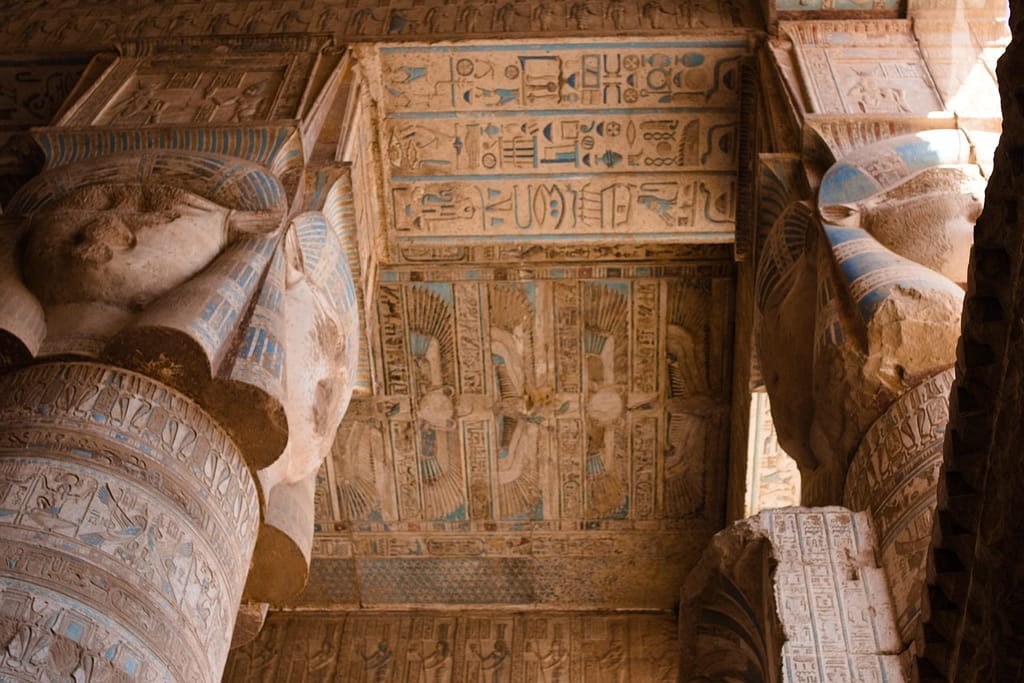




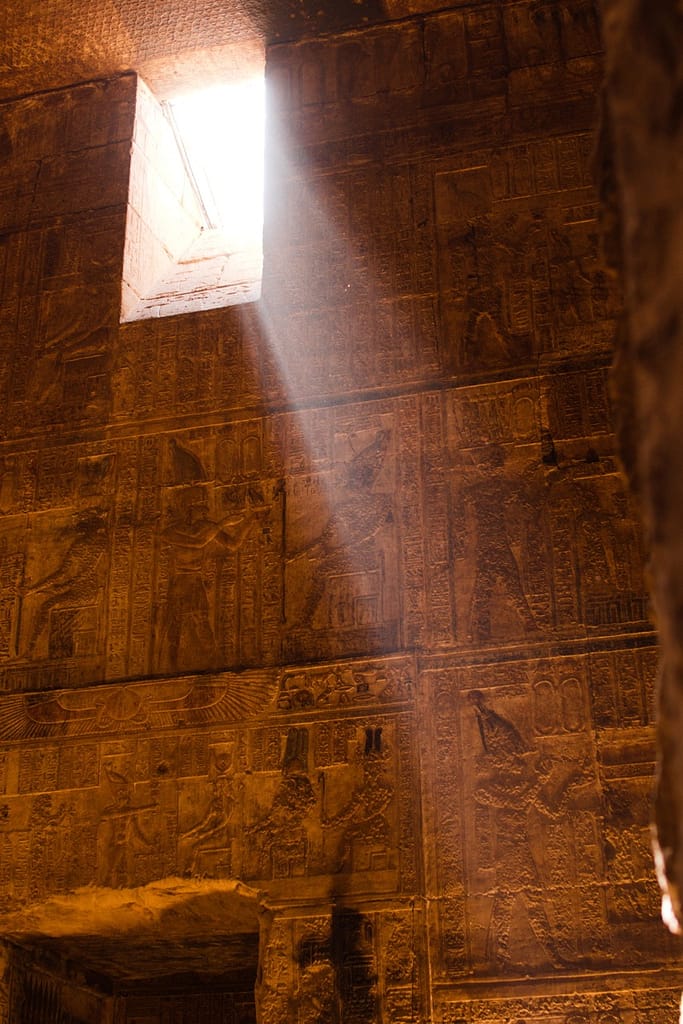





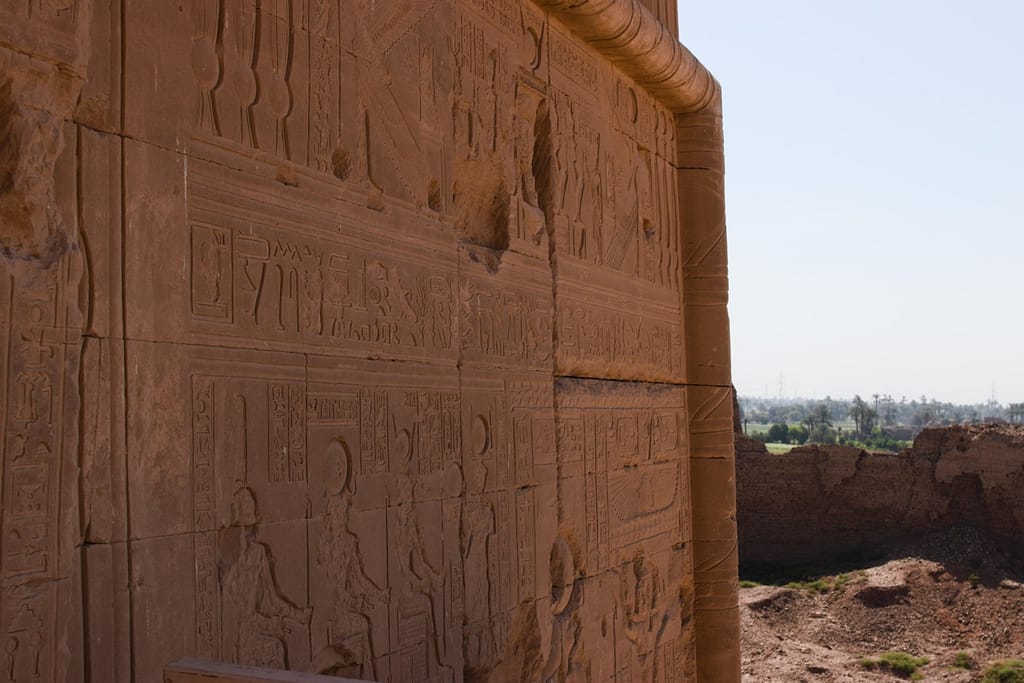


Pingback: Experiencing Egypt Part III: An Exhausting Experience - JourneymanJoe
Pingback: Experiencing Egypt Part I: A Journey Through the Pyramids - JourneymanJoe